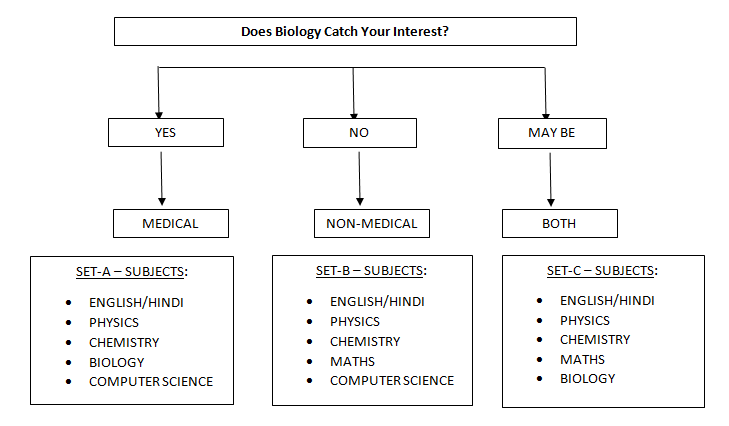AFTER 10th IN SCIENCE
AFTER 10th(in Science)
career after 10th:-
The moment a student completes his/her 10th Boards and decides to take up Science as his/her stream, he/she has to make the tough choice of choosing either Physics, Chemistry, Mathematics (PCM) or Physics, Chemistry, Biology (PCB) as career after 10th for the next two years. The student is even more confused with the plethora of suggestions that are bombarded on him/her from all quarters, be it parents, relatives or peers. Some who want to have a number of options available to them after 12th or are just plain adventurous, decide to opt for both Mathematics and Biology(PCMB). We are here to debunk the old myths and help you decide what suits you best in a very objective take on “career after 10th”. Of course, our focus will remain on the age-old debate of Engineering v/s Medical as these, till date, remains the most popular and lucrative career options for students of PCM and PCB respectively.
Students who want a career in engineering or quantitative sciences for themselves generally take up PCM whereas students interested in medical or biological sciences take up PCB. Only those students who are comfortable with mathematics should opt for PCM. Now in the current scenario, engineering can be completed in four years and then you can expect to get a job if you are from a decent enough college.
Doctors need to not only complete five years of basic medical study but mandatorily pursue MD or MS (almost an unsaid rule) to compete in today’s world. Some doctors choose to go for super-specialization as well. It is almost 10-11 years of toil before you get to settle in a comfortable position. That being said, doctors tend to stay doctors for most of their lives whereas 40-50% of engineers switch to other career options. India produces 15 lakh engineers compared to only 50,000 doctors every year. Given the constant shortage of doctors, especially in rural areas, they are likely to be in demand always whereas there are thousands of engineers graduating every year who are completely unemployable because of various reasons. Of course, the quality of engineers varies a lot if we compare students graduating from IITs and NITs with those from local colleges.
The cost of higher education:- for both PCM and PCB depends on a lot on the location from which you decide to pursue it. In general, government colleges are far more affordable than private colleges for both Engineering and Medical, as they receive grants from the government and the education is subsidized, although the admissions procedure is far more competitive too. Government institutes like the IITs and NITs offer quite affordable engineering education. Moreover, Masters and Doctorate students get stipends too. If you pursue your MS in engineering from a Scandinavian country or Germany, you have to pay zero tuition fees. On the other hand, you would have to pay anything from tens of lakhs to even some crore rupees as fees for an MS or MBA from the UK or the USA.
Medical education is also very expensive but in India, it is one of the cheapest in the world, especially if it is government-subsidized. While medical education from some private institutes can cost up to a crore rupees or $150,000 nowadays, government institutes offer the same for a lakh rupees or $1500-$2000, making it quite affordable for the middle-class. The same education in the US would have cost $200,000 to $300,000.
PCM(MATHS)(GROUP A):-
Subject:- physics
Maths
Chemistry
English
Computer
PCB(BIOLOGY)(GROUP B):-



Comments
Post a Comment